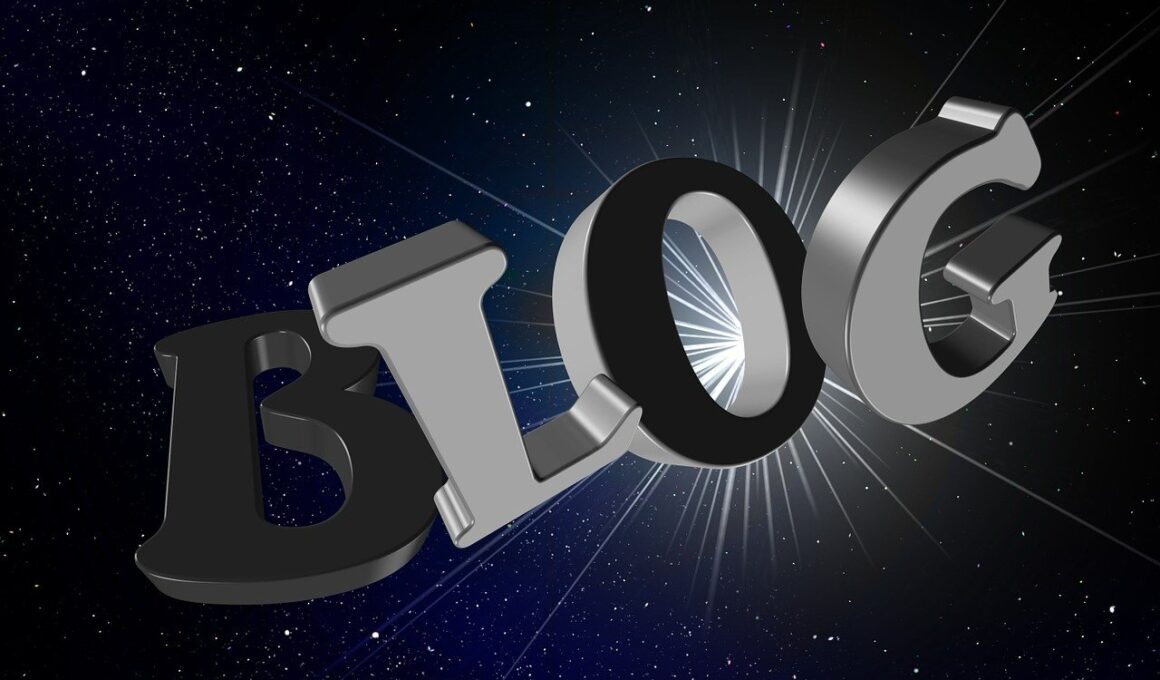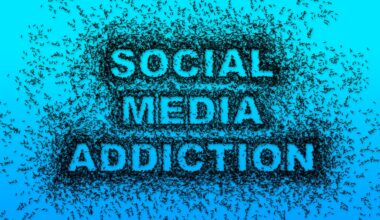Frequency Optimization in User-Generated Content Campaigns
Optimizing frequency in user-generated content (UGC) campaigns involves determining the ideal cadence for posting and sharing content. First, businesses must comprehend their audience’s preferences. Regularly posting UGC can amplify engagement, as users typically appreciate consistent contributions from brands. However, oversaturation can lead to audience fatigue. Consequently, finding the perfect balance is essential. Agencies must analyze historical data to assess how frequently UGC has resonated with the target market. Key performance indicators like engagement rates and user interactions provide insights. Moreover, understanding peak times when the audience is most active can significantly enhance visibility. Brands should leverage analytics tools to refine their frequency strategies. Experimentation is crucial for discovering what works best for each niche. Consider A/B testing different posting schedules to identify optimal times. Furthermore, maintaining quality in UGC is paramount, as frequent low-quality content can erode trust. To sum, strategically planning the frequency of UGC allows brands to harness its full potential. The objective is to create a sustainable schedule that fosters authentic relationships and consistent interactions, ultimately leading to enhanced brand loyalty and increased conversions.
The role of user engagement cannot be understated in refining frequency strategies. Actively involving users in the content process encourages loyal community building. Brands might consider incentives for consumers who create quality UGC, ensuring that contributors feel valued. Acknowledging and sharing user-generated content can further motivate participants. The right frequency balances recognition without overwhelming the audience. Customer feedback plays an essential role in calibrating content cadence. Surveys and direct communication channels provide insights into how often users would like to see updates. Employing tools like polls can also yield real-time responses. Integrating UGC into broader marketing strategies effectively enhances brand storytelling. Diverse content types such as videos, images, and testimonials can maximize engagement. Simply having a diverse portfolio keeps the audience intrigued. Additionally, seasonal events can dictate content frequency; major holidays or industry events present opportunities for frequent posts. Being reactive ensures brands remain relevant. By harmonizing trends with user preferences, brands position themselves advantageously in competitive landscapes. Ultimately, effective frequency optimization leads to meaningful interactions that build brand affinity and customer satisfaction.
Timing Your UGC Efforts
Timing plays a pivotal role in the effectiveness of UGC campaigns. Businesses must grasp when their audience is most inclined to engage with content. Research indicates that specific days and times yield higher engagement rates. For example, weekends are often favorable for casual browsing, while weekdays might suit more professional content. Social media platforms have peak usability times that vary across demographics, making it vital to tailor strategies accordingly. Engaging with users during these peak moments ensures visibility and interaction. Furthermore, incorporating analytics allows brands to track engagement patterns related to time-sensitive posts. Trends may shift; therefore, continuous evaluation is necessary. Moreover, aligning UGC postings with ongoing campaigns can create a synergistic effect, amplifying messaging. Using a content calendar facilitates planning and helps maintain consistency without overwhelming followers. Monitoring competitor strategies may also reveal effective timing. Keeping an eye on industry benchmarks will help guide frequency adjustments. Therefore, timing not only influences reach but also impacts user perception of a brand’s diligence and relevance, reinforcing lasting connections between the brand and its audience.
Audience segmentation is another strategy that enhances frequency optimization in UGC campaigns. By categorizing audiences based on behavior and preferences, brands can tailor their content distribution effectively. For example, some segments may prefer frequent short updates, while others might favor less regular, longer content. Segmenting the audience enables targeted messaging, ensuring that content resonates and engages sufficiently. Additionally, employing personas will aid in understanding audience motivations, allowing for more personalized engagement strategies. Channels such as email newsletters can be adjusted for frequency based on subscriber preferences. Continuous assessment ensures that companies remain attuned to their audience’s changing needs. Another approach is utilizing programmatic advertising to increase UGC visibility. Automated systems let brands present user-generated content effectively across social platforms while optimizing delivery times. Employing these technologies aids in tailoring frequency, thus maximizing reach based on user behavior. Ongoing evaluation of campaign performance should dictate adjustments. Leveraging user feedback helps in understanding their consumption habits better. Ensuring content frequency matches audience appetite strengthens relationships and improves overall user satisfaction.
Balancing Quality and Frequency
Maintaining quality amidst optimized frequency remains a challenge for brands. A commitment to quality guarantees that user-generated content enriches brand narratives. Establishing clear guidelines about what constitutes engaging content encourages users to contribute meaningfully. Consistently high-quality submissions foster brand loyalty and trust. Therefore, brands should promote quality over quantity. Employing content moderation processes prevents low-quality submissions from being published, thereby maintaining standards. Additionally, a brand’s engagement model influences perceptions of quality and frequency. Creating an inviting atmosphere prompts users to submit more frequently. Brands can workshop UGC campaigns by collaborating with various influencers to ensure high standards are set and met. Highlighting superior contributions can keep user motivation high. This balance of quality ensures that repeated exposure doesn’t lead to consumer disinterest. Another vital aspect is utilizing UGC reviews and testimonials to validate quality. Curating a content repository featuring highlights can showcase the best contributions and encourage others. Ultimately, establishing balance facilitates sustained interest while reinforcing the authenticity that ultimately attracts new customers. Cultivating genuine community involvement enriches brand identities.
Future trends in frequency optimization point toward increased personalization in UGC strategies. Machine learning and AI are becoming essential in predicting audience behavior and optimizing content delivery timings. These technologies enhance brands’ abilities to tailor their UGC frequencies based on individual user profiles effectively. Furthermore, exploring niche platforms where audiences might congregate can yield specific insights for frequency optimization. Each platform presents unique dynamics and preferences that could influence UGC performance. Adapting strategies across various channels allows brands to maximize reach while lowering engagement friction. Influencer collaborations will also play a central role in shaping future UGC campaigns. Brands should capitalize on influencers to increase UGC quality and engagement. These relationships can provide exclusive content, which, when shared strategically, encourages user participation more frequently. Consistent updates and revisits to UGC strategies will ensure that brands remain responsive to market changes. As new mediums emerge, understanding user behavior will inform how frequency optimization evolves. Ensuring that UGC fosters authentic connections and delivers relevant messaging is paramount to achieving business objectives.
Conclusion
In conclusion, frequency optimization in user-generated content campaigns embodies a multifaceted approach that balances audience needs, timing, and quality. Evaluating performance metrics while integrating user feedback drives iterative improvements. Additionally, understanding audience segmentation paves the way for tailored messaging strategies that resonate significantly. Engaging effectively during peak times enhances visibility, while maintaining stringent quality controls ensures authenticity remains intact. The dynamic nature of digital landscapes demands adaptability from brands in developing UGC strategies. Future technologies will pave the path toward hyper-personalization, significantly impacting how brands approach frequency management. Therefore, investing in analytics equips brands with the insights necessary to optimize user engagement effectively. Engaging with users authentically and consistently fosters community-building that transcends traditional marketing paradigms. Brands will ultimately maximize their UGC campaigns’ potential by prioritizing sustained interaction and establishing a genuine connection with their audience. Continuous learning and improvement in frequency strategies will sustain brand loyalty while enabling companies to thrive in competitive environments. By prioritizing these facets in their UGC campaigns, brands will solidify their market position and drive long-term success.
Elevating user-generated content campaigns goes beyond mere engagement; it sets the foundation for a brand’s long-term digital strategy. Brands that successfully navigate frequency optimization build loyal communities while creating pathways for authentic engagement. Consequently, such approaches facilitate resonant marketing narratives that captivate audiences whilst fostering an environment where users feel implicated and valued. When these campaigns are executed thoughtfully, the elevated frequency resonates with both consistent users and new participants alike, transforming UGC into a core element of marketing strategies. By continually optimizing these efforts, brands harness the combined power of creativity and community-driven narratives that enhance the overall user experience.


